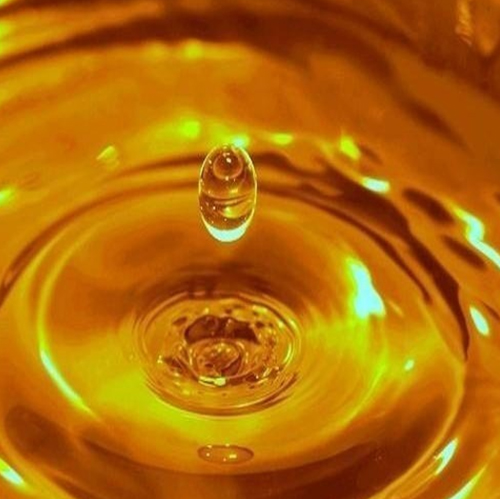Raw Linseed Oil(Linum Usitatissimum)

Linseed oil is derived from the seeds of
the Flax plant. Linseed oil is yellow in colour. Linseed oil has resolvent
properties, thereby making it highly useful for industrial applications. It
is a slow-drying liquid with good preservative properties and water
resistance. It is generally used outdoors, and can take up to three weeks to
dry. It prevents corrosion and dry rot. It has long been used as a drying
oil, a vegetable oil which undergoes oxidation and forms a natural,
plastic-like film. The reactivity of Linseed oil can be improved by the
addition of metal catalysts, called driers, which promote oxidation, and by
partially pre-oxidizing the Linseed oil through exposure to the air. It was
found that the addition of solvents such as Mineral Spirits, Japan drier,
and Turpentine would speed Linseed oil's drying time, making it a more
useful product. It is a versatile substance, depending upon how it is
processed. It is used in various industries.
Which are summarized below:
- In the Paint industry
- In the Construction industry
- In the Agriculture and Livestock industry
- In the Petroleum industry
- In the Leather industry
- In the Sports goods industry
Specifications of Raw Linseed Oil
| Common Name |
Linseed Oil |
| Botanical Name |
Linum Usitatissimum |
| Mode of extraction |
Cold Pressed |
| Colour |
Yellow colour oil |
| Parts used |
Seed |
| Moisture and insoluble impurities percentage by mass (Max) |
0.25 |
| Colour in a ¼ in cell on the Lovibond scale express as Y + 10
R, not deeper than |
35 |
| Refractive Index @ 40ºC |
1.4720 to 1.4750 |
| Relative density @ 30ºC / 30ºC |
0.923 to 0.928 |
| Butyro Refractometer reading @ 40ºC |
69.5 - 74.3 |
| Iodine value (WIJS) |
170 - 198 |
| FFA as Oleic acid % w/w (Max) |
2 |
| Acid value (Max) |
4 |
| Saponification value |
188 - 195 |
| Unsaponifiable matter % Mass (Max) |
1.5 |
| Solubility |
Insoluble in water |
| Storage conditions |
Keep in a cool place, protected from light not more than 20°C |
| Packaging Size: |
5 Kgs, 30 Kgs, 190 Kgs |
| Packing Type: |
HDPE Cans & Iron Barrels |
| Usage/ Application: |
Industrial |
| Minimum Order quantity: |
5 Kgs |
Uses of Raw Linseed Oil
In the Paint industry
Raw Lin Seed oil is the most commonly used carrier in oil paint. It makes
oil paints more fluid, transparent and glossy. For oil-based paints, slow
drying is a benefit, since this allows the paint to "level"
itself, giving a smoother finish with fewer brush marks. It is also used as
a paint thinner.
Linseed oil acts as a paint binder. It 'binds' the other ingredients of the
paint together, both while in paste or liquid form, and while drying after
use. Paint consists of some kind of coloring agent, usually finely-ground
pigments of some mineral. This fine dust needs something to make it wet so
it can be spread around, and needs something to keep it uniform, 'floating',
so it doesn't all clump up and settle to the bottom. Linseed oil serves this
purpose. It seeps into most surfaces or materials it comes into contact
with. It helps bind paint to canvas or wood, bind new paint into old paint,
and blend one color with a different color very subtly.
In the construction industry
Glazing putty, consisting of a paste of chalk powder and Linseed oil, is a
traditional sealant for glass windows. It is used as a preservative for
wood, in concrete, in caulking compounds, earthen floors, adobe and
sealants. It is also used as a wood finish. It helps wood retain its natural
moisture, aids in water repellence, retards cracking, checking and
shrinking. It is used as an alternative to solvent-based products designed
for sealing, polishing, waxing, varnishing and finishing. It helps to
toughen surfaces by penetrating and then hardening even in the layers
beneath the surface. Wood treated with Linseed oil is resistant to denting
and scratches and is easily repaired. It helps in weather proofing large
surface areas. Because of its drying and hardening properties when exposed
to air and sunlight, it is also used in the manufacture of Linoleum. The
floor covering Linoleum is made of ingredients such as wood dust, pine
resin, wood flour, cork particles and other materials which are bound
together with Linseed oil.
In the Agriculture and Livestock industry
Linseed oil is used in the maintenance of farm equipments, tools and
articles. It is used in the garden for pruning shrubs and trees. It is also
used in the making of many animal feeds and animal care products.
In the petroleum industry
Lin seed oil is used in the production of bio-diesel.
In the leather industry
Lin seed oil is used in the leather industry for leather treatment.
In the sports goods industry
Linseed oil is used in the maintenance of Cricket Bats, Baseball Bats,
Hockey Sticks, Archery Equipment and Croquet Mallets. It is used by
billiards/pool cue-makers cue shafts, in place of epoxy to seal modern
wooden surfboards, to maintain skis to make them stay supple and flexible
Other industrial uses
It is used for making lubricants and sealants, by the fire department to
treat the wood handles of hand tools that have metal implements to prevent
buildup of static electricity, in wooden instruments, paddles and boats,
carvings, and it is a traditional finish for gun stocks.
Safety Precautions
Linseed oil is highly flammable. As it evaporates, the oil can sometimes
spontaneously combust, causing a fire. For this reason, cloths which have
been used to apply Linseed oil should be allowed to dry flat outside before
being discarded or washed; these cloths should also not be run through a
dryer, as they may catch fire. Rags soaked in Linseed oil may self-ignite.
Soak them in water and dispose them.



